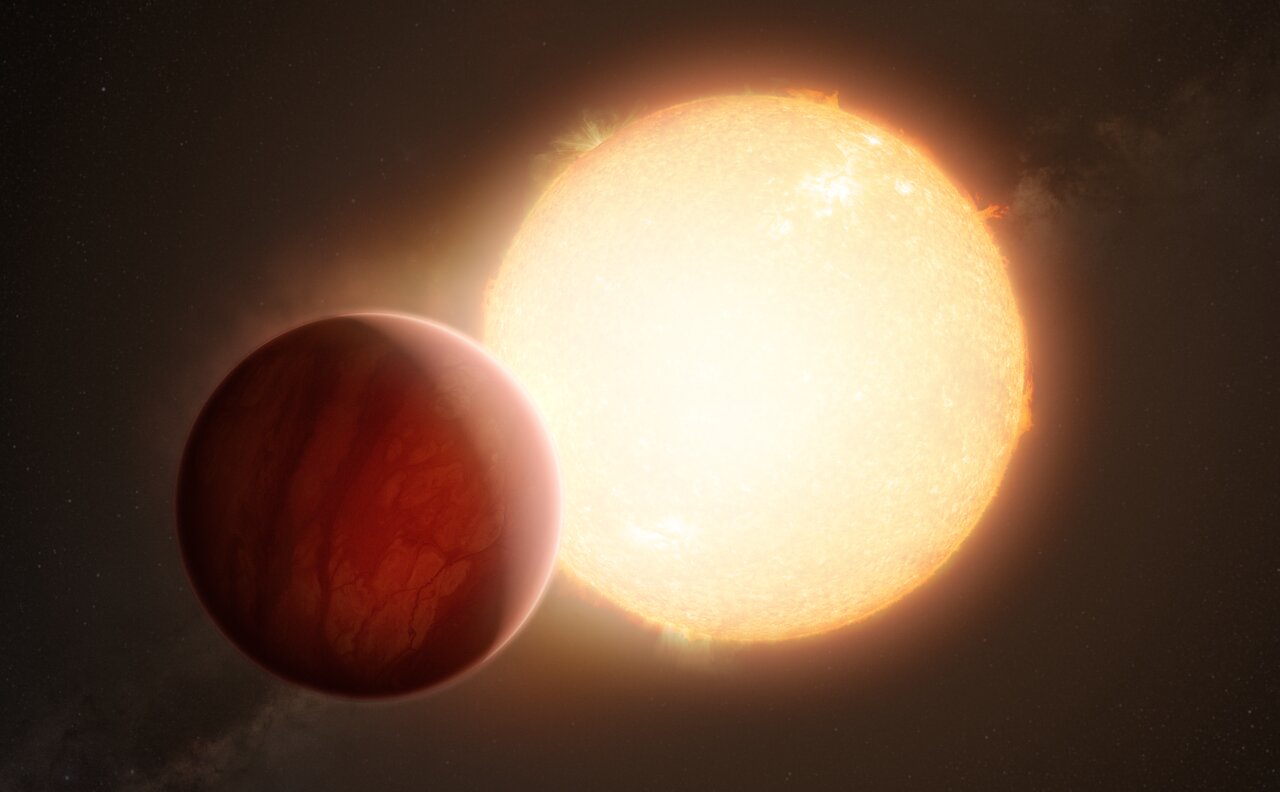Astronomers have discovered an intense binary star system located about 1,400 light years away. It contains a brown dwarf with 80 times the mass of Jupiter which is bound closely with an incredibly hot white dwarf star. Observations have shown the brown dwarf is tidally locked to the white dwarf, allowing the daytime surface temperatures on the brown dwarf to reach 8,000 Kelvin (7,700 Celsius, 14,000 Fahrenheit) — which is much hotter than the surface of the Sun, which is about 5,700 K (5,427 C, 9,800 F). The brown dwarf’s nightside, on the other hand, is about 6,000 degrees K cooler.
This object, which orbits the white dwarf star named WD-0032–317, straddles the line between a being a brown dwarf and a so-called hot-Jupiter exoplanet. If classified as a hot Jupiter, it readily surpasses the exoplanet that was previously thought to be the hottest ever detected, KELT-9b at 4,600 K.
“We’ve identified a star-orbiting hot Jupiter-like object that is the hottest ever found, about 2,000 degrees hotter than the surface of the Sun,” said lead author of the study Dr. Na’ama Hallakoun, a postdoctoral fellow at the Weizmann Institute of Science in Israel.
The research was published in Nature Astronomy.
This object is very large compared to the host star it orbits, which is 10,000 times fainter than a normal star. This allows the brown dwarf/hot Jupiter to be observed and studied much easier than other objects that orbit close to their star. “This makes it a perfect laboratory for future studies of hot Jupiters’ extreme conditions,” Hallakoun added.
Brown dwarfs are sometimes called failed stars because they are not massive enough to power hydrogen fusion reactions. However, unlike gas giant planets, brown dwarfs are massive enough to survive the gravitational pull of their stellar partners.

“Stars’ gravity can cause objects that get too close to break apart, but this brown dwarf is dense, with 80 times the mass of Jupiter squeezed into the size of Jupiter,” Hallakoun said in a press release. “This allows it to survive intact and form a stable, binary system.”
This brown dwarf orbits the white dwarf so closely that its period is only 2.5 hours.
The white dwarf star, WD-0032–317, is the remnant of a sun-like star after it depleted its nuclear fuel. It’s classified as an A-type star with a mass about half that of the Sun, and a surface temperature of 37,000 K, which is incredibly hot, even for a white dwarf.

It was discovered by analyzing spectroscopic data from the European Southern Observatory’s Very Large Telescope in Chile.
“Hot Jupiters are the antithesis of habitable planets – they are dramatically inhospitable places for life,” Hallakoun said. “Future high-resolution spectroscopic observations of this hot Jupiter-like system – ideally made with NASA’s new James Webb Space Telescope – may reveal how hot, highly irradiated conditions impact atmospheric structure, something that could help us understand exoplanets elsewhere in the universe.”

